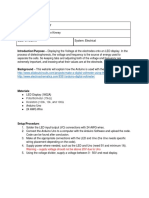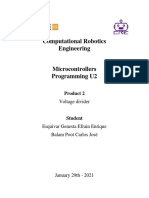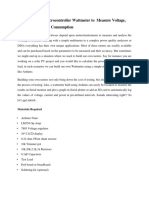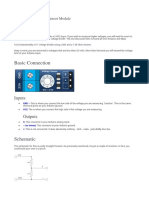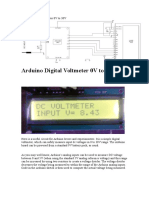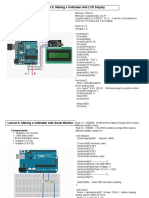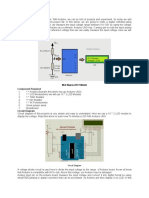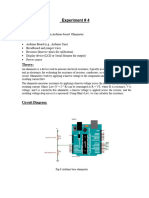0% found this document useful (0 votes)
11 views1 pageScript PDF
The document outlines a project to create a voltage meter using Arduino, capable of measuring AC and DC voltage. It details the necessary components, including a voltage sensor and resistors for a voltage divider, and provides instructions for setting up the circuit and writing the code. The project demonstrates how to safely measure voltages up to 9V, reducing them to a manageable level for the Arduino.
Uploaded by
OswanyCopyright
© © All Rights Reserved
We take content rights seriously. If you suspect this is your content, claim it here.
Available Formats
Download as PDF, TXT or read online on Scribd
0% found this document useful (0 votes)
11 views1 pageScript PDF
The document outlines a project to create a voltage meter using Arduino, capable of measuring AC and DC voltage. It details the necessary components, including a voltage sensor and resistors for a voltage divider, and provides instructions for setting up the circuit and writing the code. The project demonstrates how to safely measure voltages up to 9V, reducing them to a manageable level for the Arduino.
Uploaded by
OswanyCopyright
© © All Rights Reserved
We take content rights seriously. If you suspect this is your content, claim it here.
Available Formats
Download as PDF, TXT or read online on Scribd
/ 1




